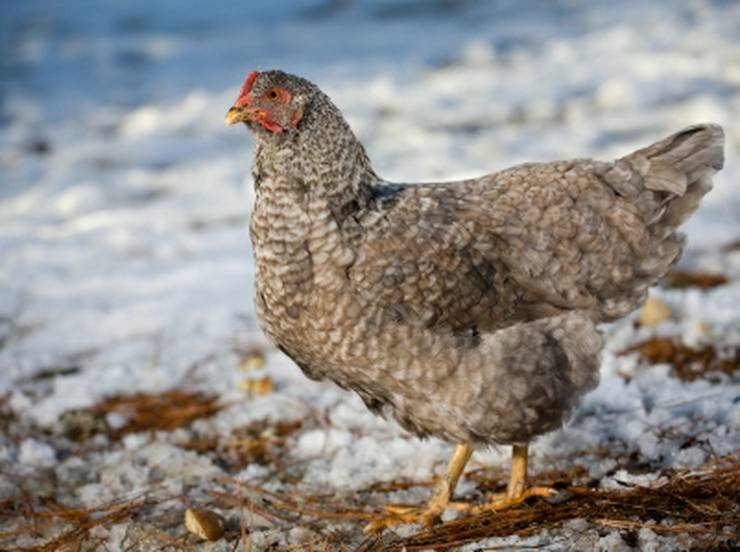We know now that the prime factor in getting hens to lay in winter is day length but these tips from Edgar Wallace in 1899 should enable the home chicken keeper to get more eggs in winter, with or without artificial light extending the day.
A Warm House Essential (for More Eggs in Winter)
In olden times hens were not expected to lay in winter. No wonder they did not! They were not hatched out until June, and were expected to pick up their living in the fields. After it became too cold for them to roost in trees they were allowed to stay in the barn nights, roosting on the big beams, or were thrust down into the noisome barn cellar.
A few handfuls of corn were thrown down to them from time to time, and if they wanted to quench their thirst they could eat snow or break the ice in the horse trough. It is a marvel they ever lived through the winter, to say nothing of laying eggs.
Even to-day, when poultry keeping is so much better understood, the importance of a warm house is not half enough appreciated.
The West Virginia Experiment Station a few years ago scientifically demonstrated the importance of a warm house in the production of winter eggs.
“Two houses situated side by side and similar in all respects were selected for the experiment. The houses had been constructed with matched siding and shingle roofs. Before the experiment began, one house was sheathed on the inside with boards and then thoroughly papered so as to cover all the cracks.
The experiment began November 24th, and continued for five periods of 30 days each. The two flocks were fed the same kind and amount of food. The total number of eggs produced per 100 hens in the warm house was 5,239, while in the cold house 100 hens laid but 4,136 eggs in the same time, a balance in favor of the warm house flock of 1,103 eggs worth in the local market 24 cents per dozen, or $22.06.
It is thus seen that the additional expense for increasing the warmth of the house was a very profitable investment.”
Feeding for Winter Eggs
Readers of the preceding chapter of this book will need no special instruction in the production of winter eggs, but it will do no harm to repeat the substance of what I have said. To get eggs in winter, or, indeed, at any season of the year, it is necessary to feed generously.One cannot get something for nothing, and if one is to get plenty of eggs from ‘his hens he must supply them with the raw materials for egg making. “Overcrowding and underfeeding are two serious hindrances to a good egg yield; but underfeeding is by far the more serious hindrance to a profitable winter’s work with the layers.”
So the second great rule for winter eggs is: Give plenty of good wholesome food ,and give variety, if you want winter layers.
Also in 200 Eggs a Year, Per Hen: How to Get Them
- Preserving Eggs
- What Breed are the Best Egg Layers
- Keeping Hens for Maximum Egg Production
- Breeding Chickens to Increase Egg Production & Utility General Rules
- Eggs in Fall & Winter
- More Eggs In Winter Tips
- The Trap Nest and Its Uses
- How to Build a Trap Nest Box for Hens – Free Plan
- Breeding Chickens – Selecting Stock
- Cross Breeding Chickens – Importance of Crosses
- Fertile Eggs & How To Get Them
- Poultry Manure A Valuable By-Product


